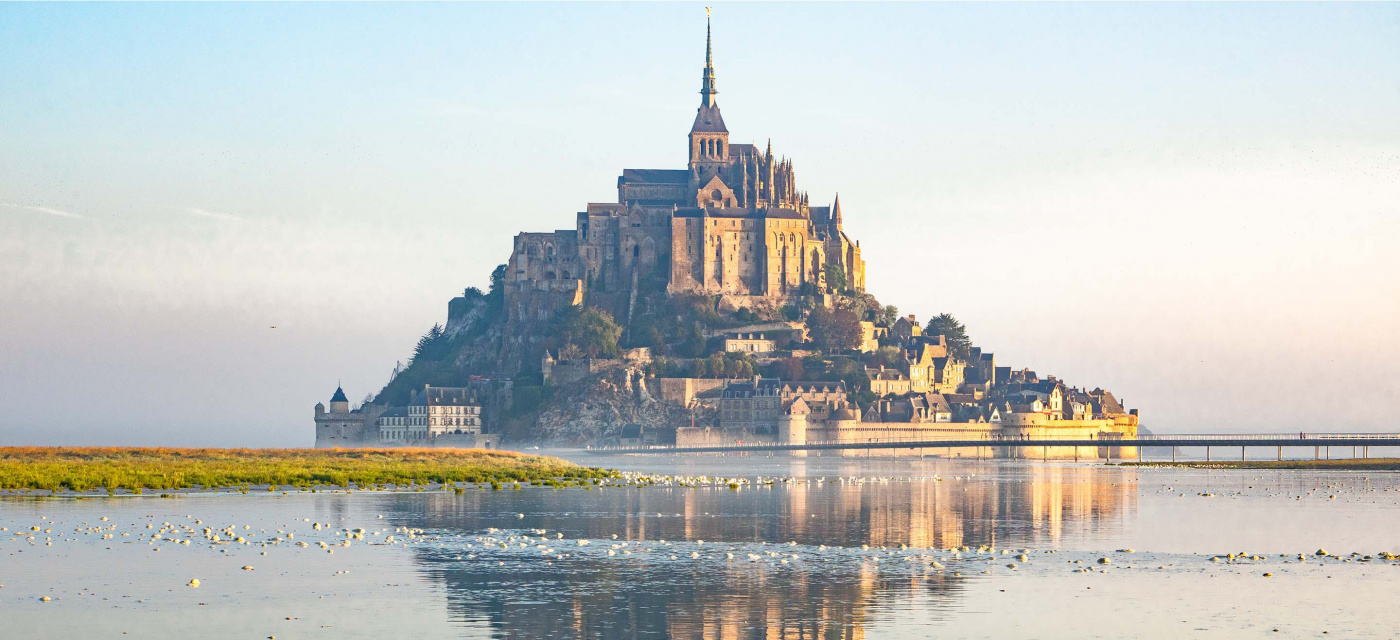This iconic abbey island, which is called the eighth wonder of the world, is the most visited attraction in France after Paris.
Externally the island of Mont Saint-Michel looks like a fortress on a rock - its architectural ensemble was even taken as a model by the creators of the Lord of the Rings trilogy. Mont Saint-Michel is considered impregnable - it survived three British blockades and did not submit to the enemy even during a 30-year siege.
BORN OF A DREAM
The mystical origin of Mont Saint-Michel dates back to 708 AD. According to legend, the Archangel Michael appeared to Bishop Aubert in a dream, ordering him to build a church on a granite cliff 20 kilometers from the city of Avranches.
The bishop did not attach any importance to this, and then the archangel appeared to him again in a dream and, in order to dispel doubts, pointed a heavenly finger at the priest's forehead.
It was the dent left by this that convinced him to order the start of construction of a temple in honor of the Archangel Michael. The construction of the abbey began in 1023 and was completed sixty years later.
There is a legend that it was on this rock, where the Benedictine monks later erected a monastery, that Julius Caesar was buried in a golden coffin, whose body was replaced and secretly taken out of Rome.
A PATH FULL OF DANGERS
To get to Mont Saint-Michel, located near the coast of Normandy, medieval pilgrims had to overcome quicksand and the strongest sea tides and tides in continental Europe.
At low tide the sea exposes the coast here for a couple of tens of kilometers, and at high tide and windy weather the water comes at the speed of a galloping horse, rising 15 meters.
Pilgrims who did not know the peculiarities of the sea in this place often died before they reached the island - they were either swallowed up by waves or dragged by wet quicksand.
Despite these dangers, the pilgrimage route to Mont Saint-Michel was one of the most popular. Even today members of the monastic fraternities of Jerusalem continue to follow the religious traditions of their predecessors.
In 1979 Mont Saint-Michel and the bay surrounding it were listed by UNESCO as World Heritage Sites for their unique aesthetics and religious significance.
Named the "city of books" for its unique library, Mont Saint-Michel has been a citadel of science for centuries. In his scriptorium, monks copied manuscripts, including Bibles and scientific treatises. However, only 200 of the 800 manuscripts stored there have survived to this day.
RESTORATION OF THE ISLAND
The embankment dam connecting Mont Saint-Michel with the mainland appeared in 1878: since that time it has ceased to be an island.
The construction of the dam increased the influx of alluvial sand into the bay, the water area was crushed and even at high tide the water often did not reach the foot of the fortress walls.
In 2005, the French authorities began large-scale work to turn Mont Saint-Michel into an island again. During the works completed in 2015, the embankment dam was demolished, and a modern bridge on stilts appeared in its place.
Today, only biofuel-powered shuttles deliver tourists to the foot of Mont Saint-Michel.
Like the island itself, where tourists from all over the world flock, and the bay surrounding it is a place where various populations of migratory birds meet. In winter, a black Cossack arrives here from Siberia.
Encouraging tourists to stay in the region for a long time, the authorities lure them with theatrical performances at the dam of the Cuannon River and exhibitions of artisanal artists in Avranches.
Half of all travelers, and their total number exceeds 3 million people a year, traditionally visit Mont Saint-Michel in July and August.
But, according to local residents, winter is the ideal time for a trip to Mont Saint-Michel. It is at this time of the year that you can hear the cries of seagulls and the singing of monks during morning worship.

